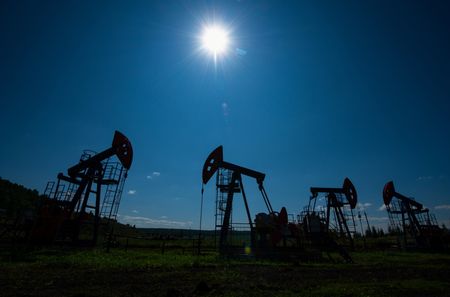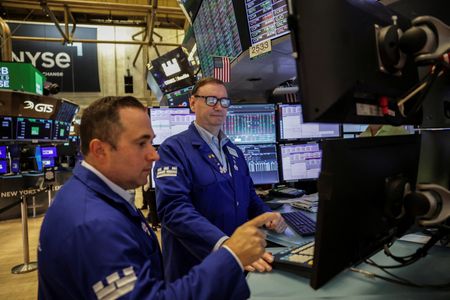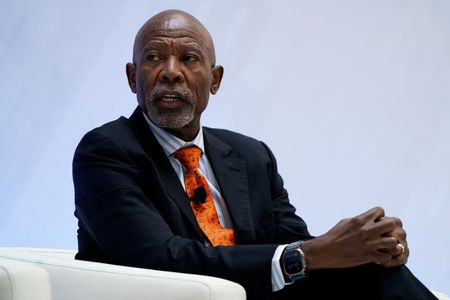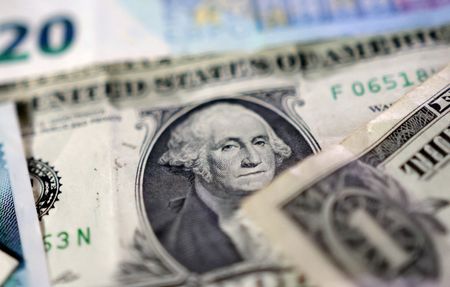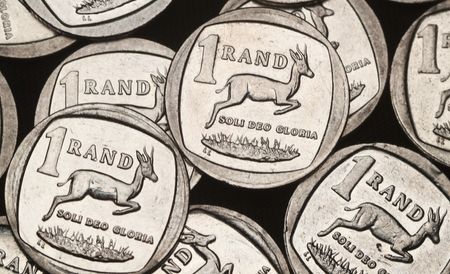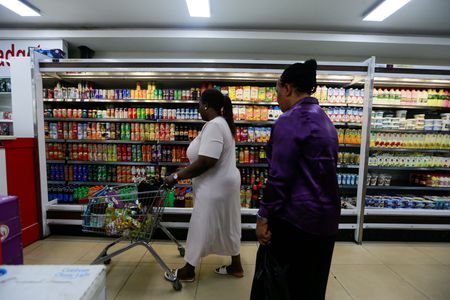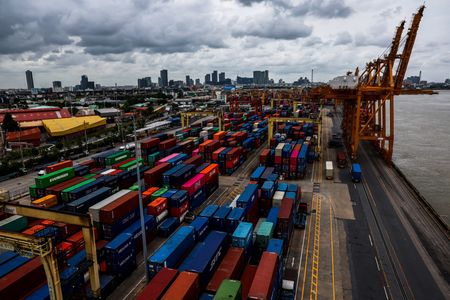By Arathy Somasekhar
HOUSTON (Reuters) -Oil prices settled marginally lower on Wednesday as U.S. fuel inventory builds and concerns about wider economic impact from U.S. tariffs outweighed some signs of increasing demand.
Brent crude futures settled 19 cents, or 0.3% lower, at $68.52 a barrel. U.S. West Texas Intermediate crude futures were down 14 cents, or 0.2%, at $66.38.
U.S. gasoline stocks rose by 3.4 million barrels last week, the Energy Information Administration said. Analysts had expected a draw of 1 million barrels.
Distillate stockpiles, which include diesel and heating oil, rose by 4.2 million barrels, EIA data showed, far surpassing expectations for a 200,000-barrel rise.
Crude inventories fell by 3.9 million barrels to 422.2 million barrels last week, the EIA said, exceeding forecasts for a 552,000-barrel draw.
“I think the market is disappointed to see large builds in gasoline and distillate inventories as refiners are operating at near their highest levels of the year turning oil into refined products,” said Andrew Lipow, president of Lipow Oil Associates, referring to refinery rates of nearly 94% of total capacity.
“I think investors are also disappointed to see gasoline demand fall just after July 4 as we are now in the peak summer driving season,” he added.
The amount of products supplied for gasoline, a proxy for demand, eased 670,000 barrels per day to 8.5 million bpd.
U.S. President Donald Trump’s tariff war continued, with the European Commission preparing possible retaliation if talks with Washington fail to secure a trade agreement for the European Union.
On Monday, Trump said the U.S. will impose “very severe tariffs” on Russia in 50 days if there is no deal to stop the war in Ukraine.
Short-term U.S. interest-rate futures rose after a report that Trump was likely to fire Federal Reserve Jerome Powell soon, with traders now betting on rate cuts starting in September and at least one more by December.
Trump said he was not planning to fire Powell, but declined to rule out anything. Interest rate cuts typically boost economic activity and energy demand.
Helping keep a floor under prices, U.S. economic activity increased slightly in recent weeks, but the outlook was neutral to slightly pessimistic, the Federal Reserve said on Wednesday, as businesses reported the Trump administration’s higher tariffs were putting upward pressure on prices.
OPEC’s monthly report on Tuesday forecast that the global economy would do better in the second half of the year. Brazil, China and India are exceeding expectations while the United States and EU are recovering from last year, it added.
Chinese state-owned refiners are ramping up output after completing maintenance to meet higher third-quarter fuel demand and to rebuild diesel and gasoline stocks at multi-year lows, traders and analysts said.
Barclays estimated that Chinese oil demand in the first half of the year grew by 400,000 bpd year-on-year to 17.2 million bpd.
On the supply side, drone attacks for a third day on oilfields in Iraq’s semi-autonomous Kurdistan region have slashed crude output by 140,000 to 150,000 barrels per day, two energy officials said on Wednesday, as infrastructure damage forced multiple shutdowns.
(Additional reporting by Ahmad Ghaddar, Colleen Howe and Trixie YappEditing by Marguerita Choy, Barbara Lewis and David Gregorio)

